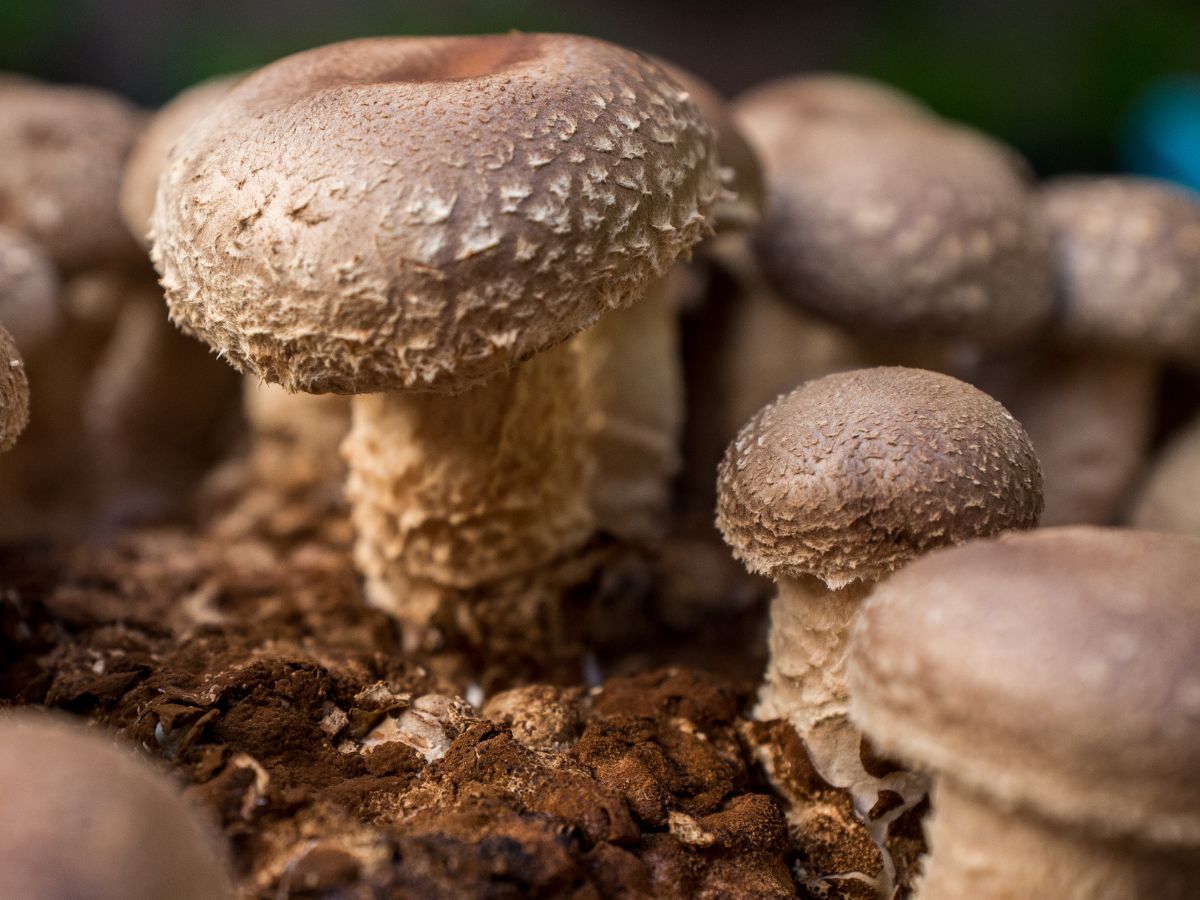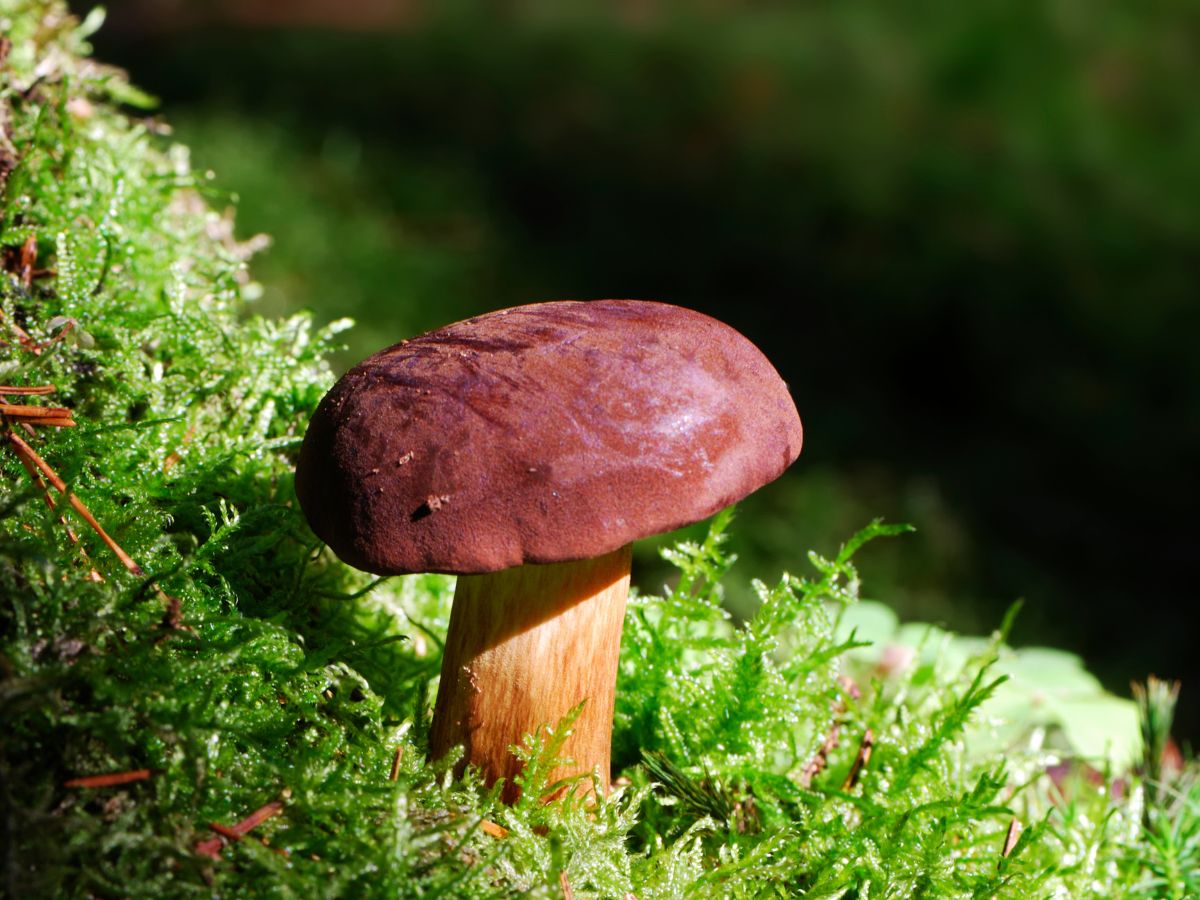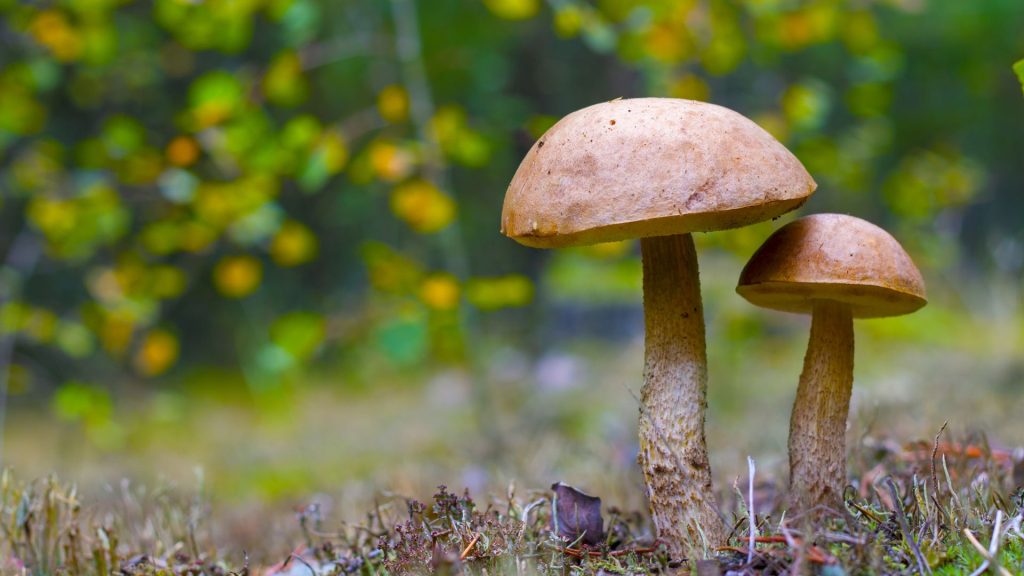Growing wine cap mushrooms is an interesting experience that will give you a lot of useful harvests. Mushrooms are a rare yet valuable crop to cultivate in your yard. Some mushrooms may only be found in the wild and cannot be cultivated, but many species are easy to grow and make a terrific addition to your yearly vegetable haul. As long as you offer the correct circumstances, growing wine cap mushrooms is simple and gratifying. Continue reading to learn more about how to produce wine cap mushrooms.
Stropharia rugosoannulata, also known as King Stropharia or garden giant mushrooms, are huge, meaty mushrooms with red-wine-colored caps and a deep mushroomy taste with faint potato and red wine flavors. Wine cap mushrooms, according to noted mycologist Paul Stamets, are among the most adaptable edible mushrooms to cultivate, easily growing in outdoor beds (including garden beds) in temperate areas.
The wine cap mushroom is one of the easiest mushrooms to grow. It may be planted almost anyplace outside on your land and doesn’t require any specific tools. The easiest way to ensure your success is to remember the first guideline of mushroom cultivation: keep the moisture in the air! Mushrooms need water and humidity to develop, so finding the right spot can help you save money on moisture management.
Why You Should Grow Wine Cap Mushrooms
In the city, there are several reasons to cultivate your food. First and foremost, you are aware of the origins of your food. You may make sure it doesn’t contain any pesticides or other chemicals. You will also have the option to save money on your food purchases as well as observe the produce as it develops. Growing your food using the wine cap mushroom is a terrific idea. Wine cap mushrooms may be grown both indoors and out. It’s a tasty complement to garden walkways made of wood chips. If you mulch with wood chips or straw, you’ll have everything you need to get started (except the mushroom culture).

Wine caps eat organic stuff that has died or is decomposing. They break down your mulch as they dine on it, releasing nutrients into the soil that your plants may absorb. In this way, they act precisely like the fungus that already exists in your garden beds, except they create edible mushrooms. You may receive harvests for years if you keep refreshing your beds with new layers of mulch every 1-2 years. Stropharia may spread to other beds over time. A fantastic return on your investment!
They have a distinct look, color, and size, making them easy to recognize even for beginners (you should never eat a mushroom you cannot identify with 100 percent certainty).
Wine cap beds generate substantial harvests of huge mushrooms, ranging in size from 6 to 8 inches (15 to 20 cm) tall, with occasional multi-pound monsters.
Now that we’ve gotten to know this amazing plant in detail, let’s shed some light on how to grow giant mushrooms.
How to Grow Wine Cap Mushrooms
So, before you start, it’s highly recommended to get grain spawn or some other inoculated spawn. Grain spawn is made out of sterilized, cooked grains with liquid culture or spores, which eventually develop into white fuzz or root-like structures known as mycelium. Wine cap mushrooms may develop quickly since grains are simple for fungus to consume, and the grains can be placed straight on your mulch.
Preparing Your Garden for Wine Caps
If you currently use mulch in your garden, you won’t have to do anything to prepare it for producing these mushrooms.
Choosing Where to Grow Your King Stropharia
The finest place for giant king Stropharia to reign is over a well-mulched, shady bed. Mulch should be at least a couple of inches thick, whether it’s made of wood chips or straw. Warm temperatures are great for wine cap mycelium, while temperatures below 68 °F (20 °C) are ideal for true mushroom production. As a result, shadow aids mushroom fruiting.
As a result, a perennial bed, especially one with shrubs or trees to provide partial shade, is the finest ‘throne’ for your king Stropharia mushroom. Wine cap spawn can be inoculated in any thickly mulched, shaded bed, such as annual vegetable beds with tall, shady crops (like tomatoes or corn). Wine caps can even be used to inoculate cold compost piles.

How to Plant Wine Cap Mushrooms with Spawn
To increase the chances of wine cap spawn settling in your garden beds, inoculate your mulch in layers.
- Cover your bed’s soil with at least 1 inch (2.5 cm) of mulch, such as untreated hardwood chips or straw.
- Stropharia rugosoannulata spawn should be equally distributed over the mulch layer. You may split up your wine cap spawn into little clumps if it’s in a block.
- Cover your spawn with a layer of mulch up to 3 inches (7.6 cm) thick.
- Water your inoculated garden bed thoroughly and evenly. For many weeks, water often enables the mycelium to establish itself.
It’s as simple as that. The wine cap mycelium will extend out like roots at this time, searching for mulch to feed on.
Caring for Wine Cap Mushrooms
Wine cap mushrooms require practically minimal maintenance if maintained in a well-mulched bed with partial shade. Just make sure the soil doesn’t dry out entirely but don’t overwater either, since moist garden beds will drown the mycelium. It’s frequent enough to give your wine cap bed a thorough sprinkling while you’re watering your garden.
Fertilizer is not required for this plant. However, when the mulch is digested by the wine caps, it will require more organic matter to break down. You may keep obtaining wine cap Stropharia harvests for years if you apply a fresh layer of mulch every 1-2 years, and it may spread to other mulched areas in your garden!

How Long Do Wine Cap Mushrooms Take to Grow
Depending on climatic circumstances and how much spawn you use, garden giant mushrooms can take anywhere from 2 to 3 months to 8 months to produce their initial flush of mushrooms. After your initial flush of mushrooms, the second flush should take no more than 3-4 weeks. Wine cap mushroom develops best in warm temperatures (64-75 °F). If you inoculate beds in the summer, you can harvest mushrooms in the fall, and provided you apply spawn in the spring, you can harvest mushrooms as early as summer if the weather isn’t too hot.
When wine cap mushrooms first grow in your mulch, they will seem like rich crimson stones. Primordia are a type of tiny, immature mushroom. They’ll reach maturity in a matter of days at this stage, so check on them every day until you’re ready to harvest.
When and How to Harvest Wine Cap Mushrooms
Wine cap mushrooms are at their best in terms of flavor and texture when they’re young, right up until the cap opens up. You may still harvest and consume them when the veil (the component that connects the cap to the stalk) splits and the cap opens up, but the flavor will be diminished and the texture will become spongy. The deep crimson hue will fade as well.
Simply pluck wine cap mushrooms from the ground to gather them. Because the mushrooms are still alive after being picked, some gardeners choose to chop off the base of the stalks and return them to their bed, allowing the wine cap mycelium to continue to develop. Alternatively, you may use them to inoculate other mulched beds, allowing your wine caps to spread across your garden.
Shelf Life: How to Store Wine Cap Mushrooms
Wine caps should be preserved in the refrigerator in a paper bag or other breathable container, much like other mushrooms. Wine caps can be preserved in the fridge for up to a week if stored in this manner. Baby wine caps can be stored for a longer period. Those which haven’t been refrigerated should be consumed within a few days.
You may also use a food dehydrator or a very low-heat oven to dehydrate wine cap mushrooms; simply chop them into smaller bits or slices to speed up the process. Mushrooms that have been completely dried and stored in an airtight container can survive virtually eternally.
Important Note on Cooking and Eating Wine Caps
Wine cap mushrooms are safe to consume, but as Paul Stamets points out, eating them in a row for more than 2-3 days might cause indigestion or nausea, especially when combined with alcohol.
Health Benefits of Wine Cap Mushrooms
Wine caps can also aid in the prevention of chilblains or pernio, hangnails, and blisters. They’re high in vitamin D, protein, and fiber, much like other mushroom types. They contain 17 amino acids, including the eight essential amino acids required for human existence. Furthermore, they’re supposed to help you maintain a healthy heart and metabolism.
Will Wine Cap Mushrooms Harm My Plants
Wine cap mushrooms are saprotrophs or decomposers that solely decompose dead plant debris. They don’t infect or harm plants, and their mycelium may kill and digest dangerous nematodes. They also interact with helpful bacteria where mulch meets soil, releasing nutrients as they break down mulch into rich humus, and their mycelium can kill and digest harmful nematodes.
Typical or Potential Pests
Assume that there will always be a culprit, regardless of the sort of mushrooms you grow. Keep an eye out for nasties like snails and slugs. Pests will be enticed away by the presence of cabbage or lettuce leaves. Dark-winged gnats and scuttle insects can be a problem. The eggs of these two pests are laid in the compost, and their maggots can harm the mushrooms. Fungicides should not be used near mushroom patches.
King Stropharia has recently gained more and more popularity, not only because of its useful properties but also because of its ability to be cultivated indoors. Plus, unlike some mushrooms, they’re regarded as simple to cultivate (no sterilization required) and produced in two seasons: spring and fall. Wine caps are known for manufacturing in such large quantities that keeping up with them is challenging. When they’re in season, this signifies there’s a chance for a marketable harvest. They may also be dried to preserve them, making them a nice addition to soups and stews throughout the winter.


